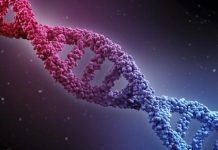NASA has created an all-electric aircraft that will not only pave the way toward electric aviation but also support the US climate goal of achieving net-zero greenhouse gas emissions from the aviation sector by 2050.
NASA’s X-57 Maxwell all-electric aircraft project will conclude aircraft operational activities by the end of September, with documentation and close-out activities continuing for several months afterwards.
The research from the X-57 provides aviation researchers with hundreds of lessons learned, as well as revolutionary development in areas ranging from battery technology to cruise motor control design.
The aircraft was built by modifying an Italian Tecnam P2006T to be powered by an electric propulsion system.
“I’m incredibly proud of their tenacity and ingenuity as they led the way in advancing electrified propulsion. The future of electrified propulsion is possible because of their contributions,” said Brad Flick, director of NASA’s Armstrong Flight Research Center in Edwards, California.
Finalising aircraft operations by September 2023 will not incorporate first flight of the X-57 aircraft, the US space agency said.
The project encountered several challenges to safe flight, including mechanical issues late into its lifecycle and a lack of availability of critical components required to develop experimental hardware.
Given the approaching planned end of aircraft operations, the timeline would not allow the team to reach acceptable flight conditions.
Although most of the X-57’s development will complete by September 2023, the team will officially conclude its work several months afterward with additional technical publications.
The primary goal of the X-57 project, said NASA, was to provide knowledge about the aircraft’s electric-propulsion-focused design and airworthiness process with regulators.
“The objective was not to develop a prototype, but to develop a test platform for technologies and design methods,” NASA added.
“They did things that had never been done before, and that’s never easy,” Flick said. “While we prepare to finish this project later this year, I see a long list of achievements to celebrate and an industry that’s better today because of their work.”
Early in the project, the X-57 team members found they would need significant developments in battery technology.
The lithium-ion batteries installed on the aircraft warm up as they discharge energy and too much warming could result in overheating.
The project worked with Electric Power Systems in North Logan, Utah to address this issue.
Engineers demonstrated that the new battery system design would stay within acceptable, safe limits while powering the aircraft.
The design of the cruise motor controllers is another success of the X-57 project. These controllers convert energy stored in the aircraft’s lithium-ion batteries to power its motors, which drive its propellers.
NASA said it will continue its research into electric aircraft through other projects, including its Electrified Powertrain Flight Demonstration.
20230624-171602




